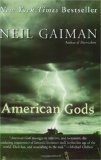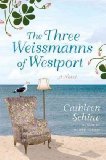[amazon_image id=”1401307469″ link=”true” target=”_blank” size=”medium” class=”alignleft”]The Winter Rose[/amazon_image]Jennifer Donnelly’s novel [amazon_link id=”1401307469″ target=”_blank” ]The Winter Rose[/amazon_link], the second in her “Rose” trilogy, is a sprawling story, but I’ll do my best to summarize it. Most of the story focuses on India Selwyn Jones, sister to Maud Selwyn Jones, a minor character introduced in [amazon_link id=”0312378025″ target=”_blank” ]The Tea Rose[/amazon_link]. Oddly enough, without divulging spoilers, people who ought to have remembered Maud and made some connections, didn’t. India is a doctor with dreams of opening a free clinic for women and children in Whitechapel. She begins working for an established doctor, but it becomes clear to her that she cannot work for him long due to his antiquated methods of practicing medicine that India knows have harmed and even killed his patients. Meanwhile, she becomes entangled with notorious gangster Sid Malone, who unbeknownst to most of the cast, is the brother of tea magnate Fiona Finnegan Bristow. Fiona is desperate to make contact with Sid, whose real name is Charlie Finnegan, and convince him to leave his life of crime. India is engaged to be married to MP Freddie Lytton—a bigger cad probably never drew breath. Freddie is only interested in India’s large inheritance. India and Sid fall in love, but they are kept apart through Freddie’s machinations. A large subplot of the novel involves the Finnegans’ youngest brother, Seamie, and his friend Willa Alden, who travel to Africa, where the book’s long dénoument takes place, to climb Mt. Kilimanjaro. Willa suffers a horrible accident, and her budding romance with Seamie is left unresolved (because it is the focus of [amazon_link id=”1401301045″ target=”_blank” ]The Wild Rose[/amazon_link]).
Whew!
There is a lot going on in this book. I did enjoy it, but perhaps not as much as The Tea Rose. I think it was because I didn’t like India as a heroine a whole lot. I couldn’t figure out Sid’s attraction to her. One thing I do need to single out for praise is Donnelly’s description of the Moskowitz family. I have worked at a Jewish high school for seven years, and in that time, I have come to learn much about Jewish culture and tradition. Usually authors who are not Jewish have difficulty capturing it, but Donnelly did a fine job. Ultimately, the book is just too big. Donnelly clearly did her research, and she showed all of it. As a result, the story is unwieldy. Some plotline inconsistencies were bothersome, too, but as they are a bit spoilery, I won’t mention them here. Suffice it to say that even Donnelly seemed to lose the thread of her story at times. One thing Donnelly does well is create villains with whom the reader can also empathize. She did it in [amazon_link id=”B004SYA7PM” target=”_blank” ]Revolution[/amazon_link] with Max R. Peters, and she even managed to explain Jack the Ripper’s behavior (a little bit, anyway) in The Tea Rose. Freddie Lytton is no different, but he is more sympathetic than Donnelly’s other villains. While I couldn’t help but hate him, Donnelly was also careful to show how people like Freddie are made, not born, and how they might still, deep inside, hate themselves for what they do. In all, I still enjoyed the book very much and look forward to seeing if Seamie and Willa can sort things out in The Wild Rose. The Finnegan family are a fun bunch.
Rating:




























